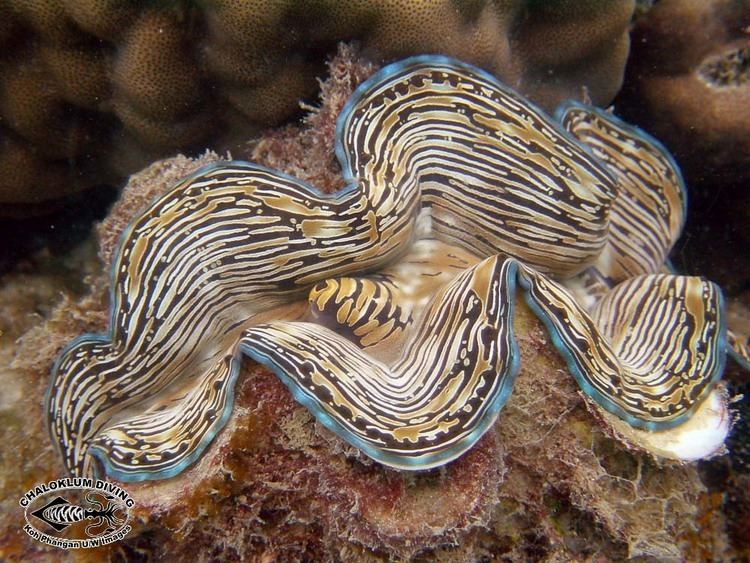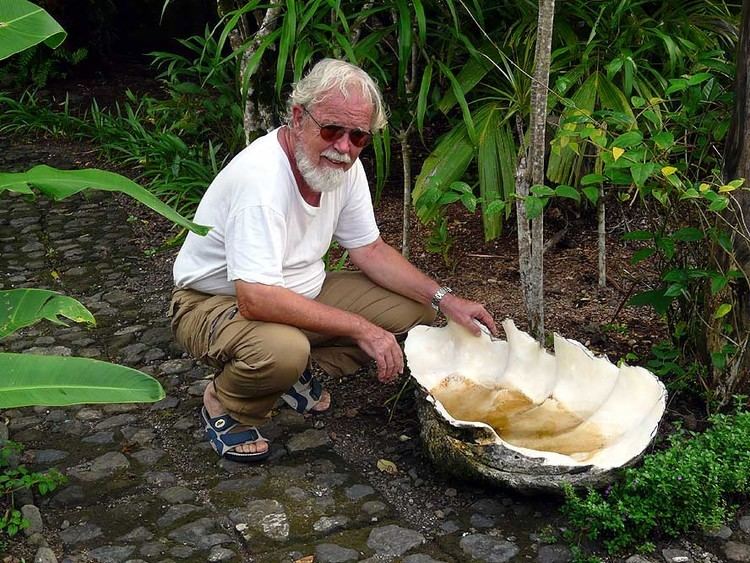Subfamily Tridacnidae Lamarck, 1819 Order Veneroida | Scientific name Tridacninae Higher classification Cockle Rank Subfamily | |
 | ||
Lower classifications | ||
Tridacnidae, common name, the giant clams, is a taxonomic subfamily of very large saltwater clams, marine bivalve mollusks in the family Cardiidae, the cockles.
Contents

Description

This family contains the largest living bivalve species, including Tridacna gigas, the giant clam. They have heavy shells, fluted with 4–6 folds. The mantle is usually brightly colored. They inhabit coral reefs in warm seas in the Indo-Pacific region. Most of these clams live in symbiosis with photosynthetic dinoflagellates (zooxanthellae).
Systematics

Sometimes the giant clams are still treated as a separate family Tridacnidae, but modern phylogenetic analyses included them in the family Cardiidae as a subfamily. Two recent genera and eight species are known:
Recent genetic evidence has shown them to be monophyletic sister taxa.
Human relevance
In some areas, such as the Philippines, smaller members of the family are farmed to supply the marine aquarium trade.
